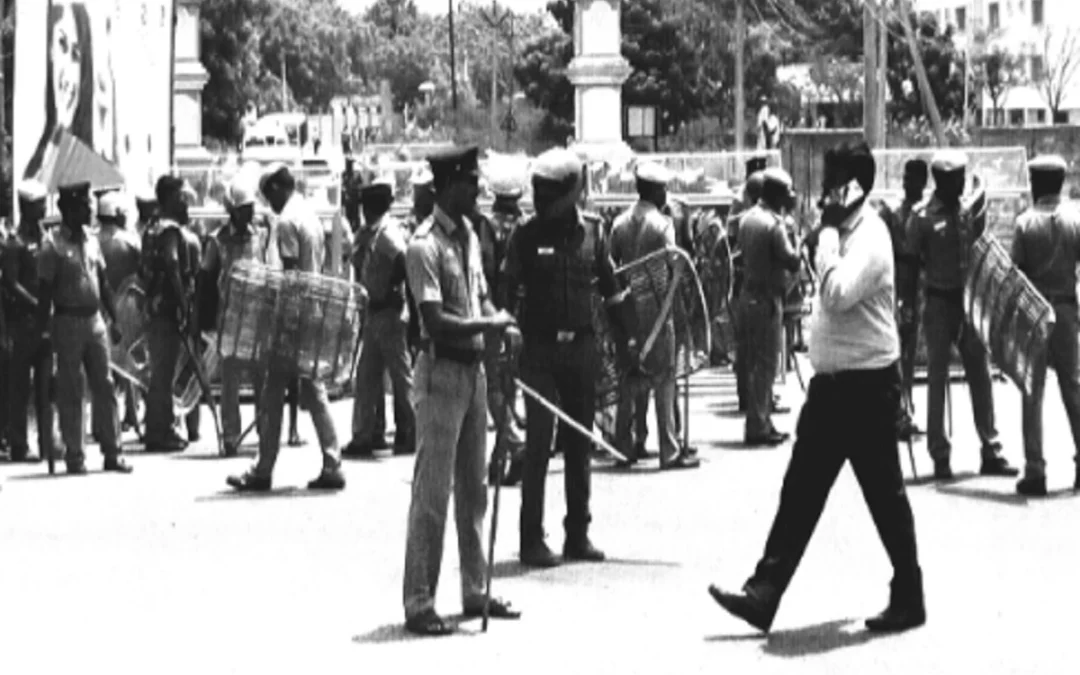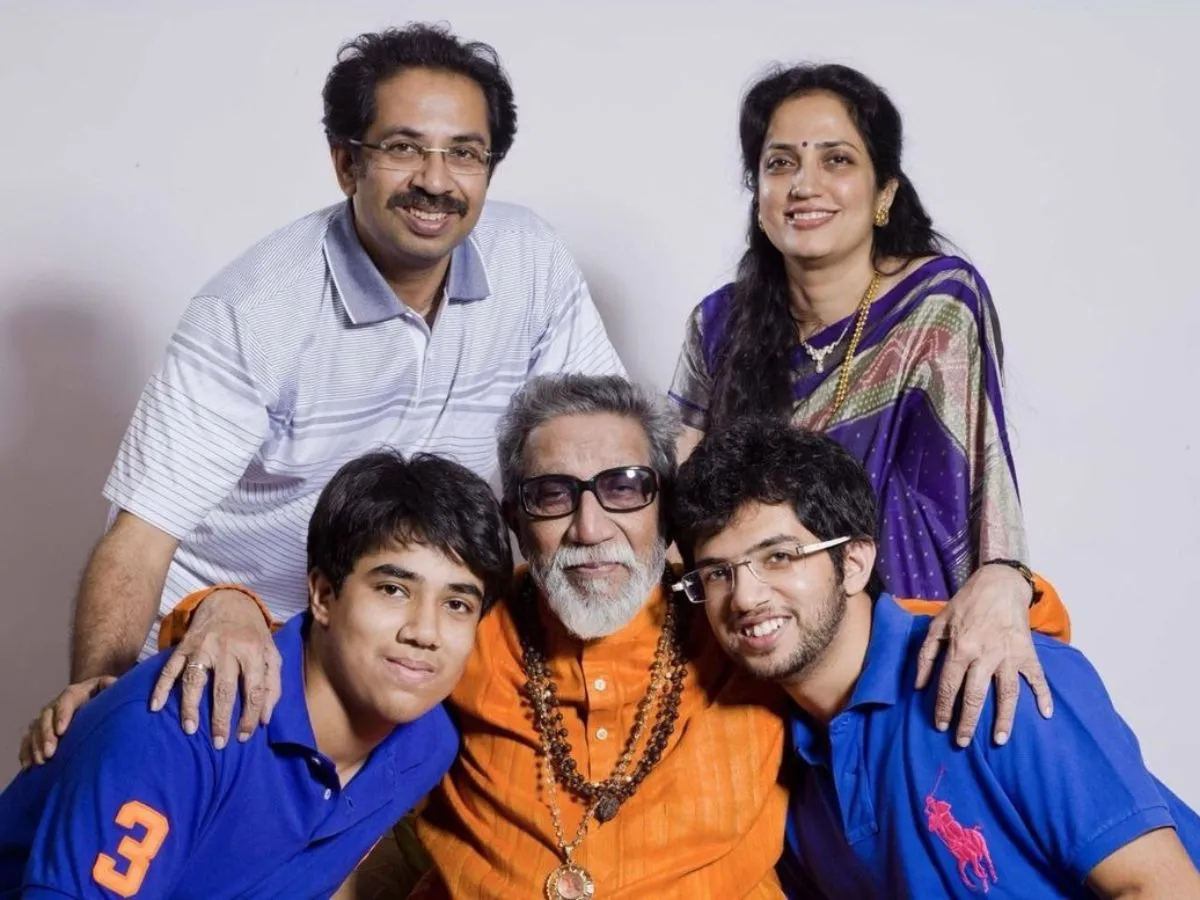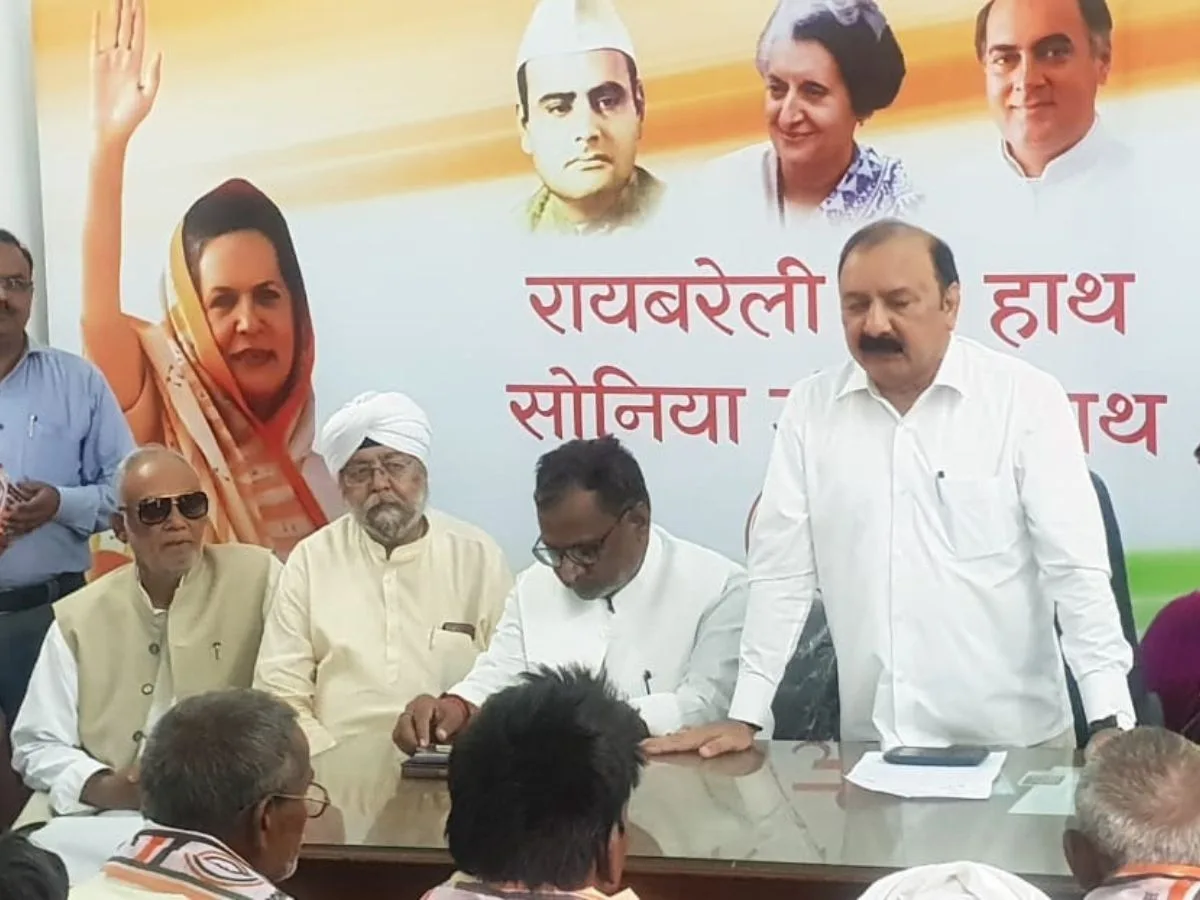Read in : தமிழ்
Head constable Raja had come to distribute food packets so his fellow policemen could be fed and have the energy to battle rioters. He was in plainclothes and doing his duty. Ordered by his superiors, he climbed on top of an Eicher police van and shot at protesters with a 0.410 musket – a gun of 1920s vintage of the Indian police. The image of Raja shooting at protesters has come to symbolize police brutality in the eyes of the media and many people on that fateful day in Thoothukudi.
The Aruna Jagadeesan report has said Raja shot and killed Karthic – among the first to die in police firing in Thoothukudi on May 22, 2018. The report has been particularly severe on Sudalaikannu. It says Sudalaikannu, trained in the Sathyamangalam forest reserve, acted like a hunter shooting animals. He shot at protesters at three spots: near the Collectorate arch, near FCI godown and the lastly at Threspuram.
At the fishermen enclave of Threspuram, Sudalaikannu shot at 40-year-old Jansi Rani point blank and blew her brains out, the panel report says. A restive crowd at Threspuram was rioting after the shooting deaths earlier in the day at the collectorate and had to be restrained, as far as the police were concerned. This correspondent visited Jansi Rani’s apology of a hutment in Threspuram a few days later and heard her kin wondering how Jansi Rani could have been considered a rioter when she had stepped out to give fish to her daughter for cooking.
Raja, Sudalaikannu, Shankar, Rennes, Sornamani and others were the police shooters, as per the report. Video clips of Sub Inspector Rennes chasing protesters at the collectorate and shooting at them with his 9mm pistol are yet another memory of that day. All of them were acting on the orders of higher-ups such as then deputy superintendent of police Tirumalai, superintendent of police Mahendran, deputy inspector general Kapil Kumar Saratkar or inspector general Shailesh Kumar Yadav, the report says.
The firing was motivated by a desire to punish the protesters, rather than being an act of crowd control, the report has concluded
The panel has recommended action against 17 police officers and the state government has suspended four. More action may be forthcoming in the future.
The Aruna Jagadeesan commission has fleshed out startling information and egregious violations, even as it held steadfast to its basic premise that the police firing was a clear case of unwarranted overreaction. The firing was motivated by a desire to punish the protesters, rather than being an act of crowd control, the report has concluded.
Also Read: Sterlite protests: Who was involved and how it built up to the day of the police firing
The protesters were belligerent and pelting stones. But that did not call for the use of lethal weapons to shoot to kill. The report has concluded that the acts of arson inside the collectorate happened after the first shootings that killed five people, so the police cannot claim the shooting was a response to rampaging arsonists.

Head Constable Raja who was delivering food packets to fellow policemen was ordered by his higher-ups to climb up a police vehicle and shoot at protesters
What else could the police have done when faced with tens of thousands of angry protesters demanding the immediate shutdown of Sterlite, pelting stones and sometimes throwing petrol bombs? The police had been outnumbered, attacked and made to retreat at the VVD Signal. Defying prohibitory orders, the protesters were advancing from there to lay siege to the collectorate, the seat of district government. Leftwing activists were kindling passions. The situation was slipping out of control and a strong show of authority and force was needed, it has been argued.
The panel report is full of anecdotes that show how the police were viewing the protests. At Anna Nagar, on May 23, when the last of the shooting deaths occurred, the police disdainfully dragged the injured and dying man they had shot to the side of the road. They muttered how the man writhing in pain was faking it.
The previous day, even as they were firing at protesters, the police had killed Selvasekar by raining lathi blows on his head and chest, as per the Aruna Jagadeesan report. Policemen coming in a two-wheeler shot and killed Antony Selvaraj who had come to invite people for his daughter’s coming-of-age ceremony. They had refused to help rush any of the injured to the hospital. The administration’s ambulance services were invisible and it was left to Good Samaritans, such as from the Tamil Nadu Muslim Munnetra Kazhagam, to cart the dying and the injured to hospital, the report has noted.
Police anger and disdain was likely caused by the relentless nature of the protests. It was after all the 100th day of the agitation against a factory that was polluting.
The Aruna Jagadeesan report has outlined several missed opportunities that could have prevented the protests from escalating. Sterlite had shut down for 10 days for maintenance during the agitation. On April 9, 2018, the Tamil Nadu Pollution Control Board had refused to permit reopening of the plant since the authorization to generate and dispose hazardous waste had expired in 2013 but Sterlite was still operating. Further, a gypsum pond had to be constructed as per central norms but the company hadn’t done it. Groundwater analysis had not been done as mandated. The company had been asked to remove copper slag it had dumped along Uppar River but it had not done so.
The panel has concluded that magisterial orders to shoot at the collectorate were never obtained. The shooting was therefore illegal, it has implied
Sterlite had appealed to the appellate authority of the TNPCB, the report says. On May 4, 2018, the appellate authority too refused permission for Sterlite to continue operating. The Aruna Jagadeesan panel has said that the agitation would have ended if only the administration had given wide publicity to the TNPCB orders and promised they would be implemented.
As part of a due process, the TNPCB told Tangedco to cut power supply to Sterlite so it would be forced to shut down. But this order came one day too late and the protesters didn’t know it was coming, in any case.

The collector, N Venkatesh had WhatsApped Girija Vaidyanathan, chief secretary, that a committee should be constituted to conclusively evaluate the health impacts of Sterlite. If this had been done, the protesters may have been mollified.
Police intelligence head K N Sathyamurthy had told then DGP K Rajendran that fishermen who were sitting idle because of the routine fishing ban may be easily convinced by Leftists to back the protests that the villagers around Sterlite had launched. He felt the government should engage with the fishermen community so they didn’t jump in. This was told to then chief minister Edappadi Palaniswami but he didn’t move, says the panel. On May 22, it was the fishermen who were among the most militant of the protesters. Among the dead were many fishermen too, including 16-year-old Snowlin.
As the agitation snowballed and drew more and more people, the stage was set for a finale to mark the 100th day. By now Leftist organizations such as Makkal Adhigaram had taken over the leadership of the protest. But they were not invited for the peace committee meeting held ahead of the planned 100th day to ensure there was no violence on May 22.
In that meeting, permission was given for a protest at SAV School Grounds inside Thoothukudi city but not for picketing the Collectorate. Section 144 was passed in two police station limits on the night of May 21. This meant people couldn’t come out in groups and go to SAV School Grounds where the authorities had permitted the protests, adding to the confusion. Few knew about the prohibitory orders in any case.
Also Read: Vedanta puts up Sterlite plant for sale, calls it ‘green’ unit
People were allowed to assemble at the Basilica of Our Lady Of the Snows, which was a blunder, the panel noted in its report. From there the march to the collectorate started.
Intelligence reports warned of the Christian community supporting protests. They talked of the matter being discussed at church meetings. But the government took no action, the panel says. Overall, though the panel does list the failings of the AIADMK government, it has not quite given separate attention to the lack of leadership at the highest levels of government.
Five Vajra vans were asked for by the superintendent of police. Only two were given. At various places including at the Collectorate arch, Vajra vans stationed to block protesters could have been deterrents. There were no water cannons either.
The panel has concluded that magisterial orders to shoot at the collectorate were never obtained. The shooting was therefore illegal, it has implied.
The May 21 late night order appointed several deputy tahsildars as Special Executive Magistrates for various protest spots in Thoothukudi. These magistrates were empowered to give shooting orders. Rajkumar Thangaseelan, who was the special executive magistrate for Collectorate area, never gave the order, the Aruna Jagadeesan panel has concluded. The commission has found evidence that Thangaseelan was indeed at the collectorate, disputing the testimony of another special executive magistrate posted at Threspuram that he moved to collectorate and gave the shooting orders because Thangaseelan wasn’t there at the collectorate. The panel report notes that Thangaseelan is now deceased and not available to corroborate.
Read in : தமிழ்











